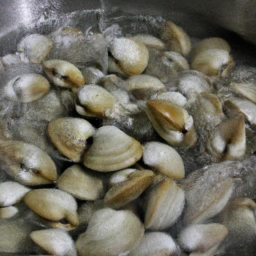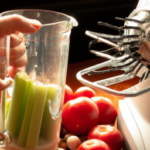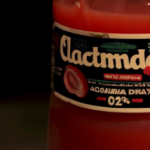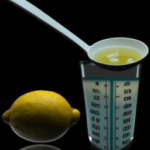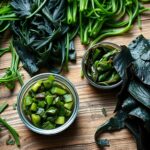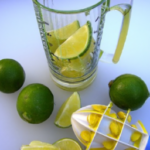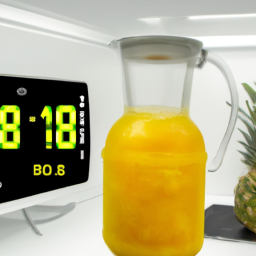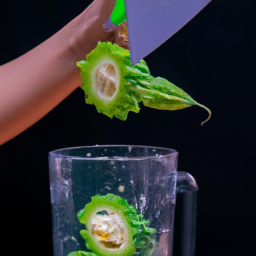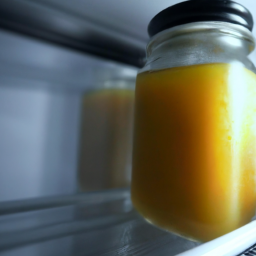I love experimenting with new recipes and experimenting with different flavors in my cooking. Lately, I’ve been really interested in clam juice. It’s a versatile ingredient that can be used in both cooking and cocktail recipes, adding a unique umami flavor to dishes.
Making clam juice from scratch might seem daunting, but it’s actually quite simple. All you need are fresh clams, a steamer, and some basic kitchen tools.
In this article, I’ll walk you through the steps of making clam juice, from sourcing fresh clams to adjusting the flavor to your liking.
So, let’s get started!
Key Takeaways
- Sourcing fresh clams from a reliable seafood market is crucial for making clam juice.
- Steaming the clams until their shells open and the meat is cooked through is necessary before collecting the clam juice.
- Adjusting the flavor of the clam juice with spices like celery salt, black pepper, and garlic powder can enhance the taste.
- Using clam juice in cocktails and cooking adds a unique flavor and provides health benefits while keeping it low in fat.
Sourcing Fresh Clams
You gotta head to your local seafood market to get your hands on some fresh clams for this clam juice recipe. Finding a reliable supplier is key to getting the best quality clams for your juice.
Look for a market that has a good reputation for selling fresh seafood. Don’t hesitate to ask the staff where the clams came from and how fresh they are. They should be able to tell you when the clams arrived and how they were stored.
When checking the quality of the clams, make sure that they are tightly closed. If the clam is open, tap it gently with your finger. If it doesn’t close, it’s no good. Also, check the shells for any cracks or chips.
Once you’ve found your clams, it’s time to move on to cleaning and preparing them for the juice.
Cleaning and Preparing the Clams
First, start by scrubbing the clams under running water to remove any debris or sand. It’s important to remove any sand or grit from the clams, as it can ruin the flavor of the juice. To ensure that the clams are clean, use a stiff-bristled brush or sponge to scrub the shells thoroughly. Pay special attention to the hinge area, as this is where sand and debris tend to accumulate.
Once the clams are clean, it’s time to shuck them. Shucking can be tricky, but with a little practice, it becomes easier. Hold the clam with the hinge facing you and insert the tip of a clam knife into the small gap between the two shells. Wiggle the knife back and forth to loosen the muscles that hold the clam closed, then twist the knife to pop the shell open.
Once the shell is open, use the knife to cut the muscle that attaches the clam to the shell. Repeat this process with all of the clams, discarding any that don’t open.
With the clams cleaned and shucked, we’re ready to move on to steaming them to create our delicious clam juice.
Steaming the Clams
Now it’s time to coax the savory essence from the ocean’s bounty by gently steaming the clams until they surrender their briny nectar.
To start, it’s important to select fresh, live clams. Look for clams that are tightly closed or that close when tapped. Avoid any that are already opened or have broken shells. Once you have your clams, rinse them thoroughly in cold water to remove any grit and sand.
Next, prepare the steaming apparatus by adding a couple of inches of water to a large pot and bringing it to a boil. Place the clams in the pot, cover with a tight-fitting lid, and reduce the heat to medium. Steam the clams for 5-10 minutes, until their shells have opened and the meat is cooked through.
Remove the clams from the pot and discard any that have not opened. Now, we can move on to the next step of collecting the clam juice.
Collecting the Clam Juice
As you watch the steam rise from the pot, the tantalizing aroma of the briny ocean fills your senses, signaling that it’s time to collect the precious liquid that will infuse your dish with flavor. Collecting the clam juice is just as important as steaming the clams, and it’s crucial to do it properly to ensure a delicious final product. There are several straining techniques to choose from, each with its own unique flavor profile.
One popular method is to use a cheesecloth or fine-mesh sieve to strain the clam juice. This results in a clear, smooth liquid that’s perfect for soups and stews. Another option is to use a colander or strainer with larger holes to capture some of the clam meat and add a more robust flavor to the juice. Whatever method you choose, be sure to discard any sand or sediment that may have accumulated at the bottom of the pot. Now that you have collected the clam juice, it’s time to adjust the flavor to your liking.
Adjusting the Flavor
To truly bring out the flavors of your dish, you’ll want to add a few key ingredients to your collected liquid. Start by adding some spices to the juice. I recommend using a combination of celery salt, black pepper, and garlic powder. You can also experiment with other spices, such as cumin or paprika, to give your clam juice a unique flavor.
When adjusting the flavor of your clam juice, it’s important to pay attention to the ratios of the ingredients. Start with a small amount of each spice and taste as you go. You can always add more, but it’s difficult to remove spices once they’ve been added.
Once you’ve found the perfect combination of spices, store your clam juice in an airtight container in the refrigerator for up to a week.
Storing Your Clam Juice
Don’t let your hard work go to waste by forgetting to store your deliciously seasoned clam juice in an airtight container in the refrigerator. Clam juice must be stored properly to maintain its freshness and flavor.
You can store it in a glass jar or a plastic container with a tight-fitting lid. The clam juice can be refrigerated for up to three days. However, if you want to extend its shelf life, you can freeze it for up to six months.
Freezing options are available if you wish to store your clam juice for a longer period. You can store it in an airtight container or a freezer bag. Before freezing, make sure to remove excess air from the bag or container to prevent freezer burn.
When ready to use, thaw it in the refrigerator or place the container in a bowl of warm water until it reaches room temperature. Now that you know how to store your clam juice, let’s move on to using it in cocktails.
Using Clam Juice in Cocktails
Get ready to add a new twist to your cocktail game by infusing your drinks with the unique flavor of briny ocean goodness. Using clam juice in cocktails might sound strange, but it adds a deliciously savory taste to your drinks.
Mixology techniques such as rimming your glass with Old Bay seasoning or using a smoked salt rim can enhance the flavor even more.
When it comes to flavor combinations, clam juice pairs well with tomato juice for a classic Bloody Mary or with citrus for a refreshing and tangy cocktail. Try mixing clam juice with grapefruit juice, lime juice, and tequila for a delicious twist on a Paloma.
The possibilities are endless, and experimenting with different ingredients can lead to some surprisingly delicious drinks.
Now that you have some ideas for using clam juice in cocktails, let’s talk about using it in cooking.
Using Clam Juice in Cooking
Cooking with clam juice is like adding a splash of ocean flavor to your dish, giving it a subtle but distinct taste that elevates the overall experience. Not only does it add a unique flavor, but it also has some health benefits.
Clam juice is low in fat, high in protein, and a good source of vitamins and minerals. Here are three ways to incorporate clam juice in your cooking:
-
Use clam juice as a broth base: Clam juice can be used as a base for soups and stews to give your dish a rich, savory flavor. Use it as a substitute for chicken or vegetable broth for a seafood twist.
-
Add clam juice to sauces: Add a splash of clam juice to your pasta sauce or stir-fry sauce for a briny, salty flavor that complements the other ingredients. It also helps to add a little extra liquid to thin out thick sauces.
-
Use clam juice in seafood dishes: Clam juice pairs well with other seafood such as shrimp, scallops, and fish. Use it to poach seafood or as a marinade to infuse the flavors. It also works well as a steaming liquid for clams and mussels.
Incorporating clam juice in your cooking not only adds a unique flavor but also provides some health benefits. It’s a great way to add some extra protein and nutrients to your dishes while keeping it low in fat. Give it a try and see how it elevates your cooking techniques to the next level.
Frequently Asked Questions
Can you use canned clams instead of fresh ones for making clam juice?
Yes, canned clams can be used instead of fresh ones for making clam juice. However, the flavor comparison may not be as good as with fresh clams.
What is the nutritional value of clam juice?
As a health-conscious individual, I appreciate the numerous health benefits of clam juice. It’s low in calories, high in protein, and contains essential vitamins and minerals. Culinary uses of clam juice include adding depth of flavor to seafood dishes and cocktails. Try incorporating it in your recipes for a nutrient boost.
Can you freeze clam juice for later use?
Yes, you can freeze clam juice for later use. To do this, simply pour the leftover clam juice into a freezer-safe container and place it in the freezer. When ready to use, thaw it and try using it in recipes like chowders or seafood stews.
How long can you keep homemade clam juice in the refrigerator before it goes bad?
I once kept homemade clam juice in the fridge for a week, and it went bad. To avoid this, store it in an airtight container and consume within three days. Keep it in the coldest part of your fridge.
Is it possible to make clam juice without a steamer?
Yes, alternative methods to using a steamer include boiling shucked clams in water or using canned clams. Flavor variations can be achieved with added spices or by using different types of clams.
Conclusion
Well folks, that’s how you make clam juice! It’s a labor-intensive process, but completely worth it for the deliciously briny flavor that you’ll get.
As a lover of seafood, I can tell you that this juice is the perfect addition to any dish that needs a little extra oomph. It’s like a flavor bomb that will take your cooking to the next level.
One thing I love about making clam juice is the satisfaction of knowing that I made it myself. It’s a bit like catching a fish and cooking it on the spot – there’s a sense of pride that comes with knowing exactly where your food comes from.
Plus, the freshness of the clams really shines through in the final product. So, give it a try and let me know what you think!
Ilana has been a vegan for over 10 years. She originally made the switch for health reasons, but soon found herself becoming more and more passionate about the ethical and environmental implications of a vegan lifestyle. Ilana is the author of The Graceful Kitchen, a blog all about veganism. She loves to cook up delicious and nutritious vegan meals, and share her recipes with others who are interested in leading a cruelty-free life. Ilana is also a strong advocate for using whole foods as the foundation of a healthy diet, and believes that going vegan is one of the best ways to achieve this.
